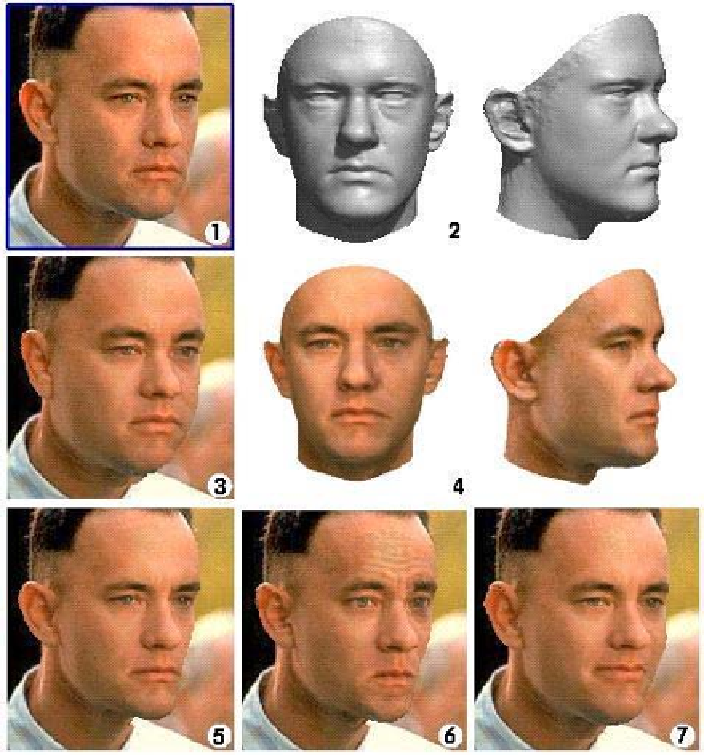Image Processing Reference
In-Depth Information
Figure 4.10:
Matching a morphable model to a single sample image
Blanz and Vetter
[
1999
]. (1) of
a face results in a 3D shape (2) and a texture map estimate. The texture estimate can be improved by
additional texture extraction (4). The 3D model is rendered back into the image after changing facial
attributes, such as gaining (3) and loosing weight (5), frowning (6), or being forced to smile (7). Courtesy
of T. Vetter
more sophisticated ones and therefore use shading information more effectively than is currently
done.
A different approach to combining texture and shading cues was proposed
in
White and Forsyth
[
2006
]. Textural information is exploited by first triangulating the im-
age and then computing normal estimates by template-matching the individual triangles against
frontal reference views. This gives accurate normal information up to a two-fold normal ambiguity,

Search WWH ::

Custom Search